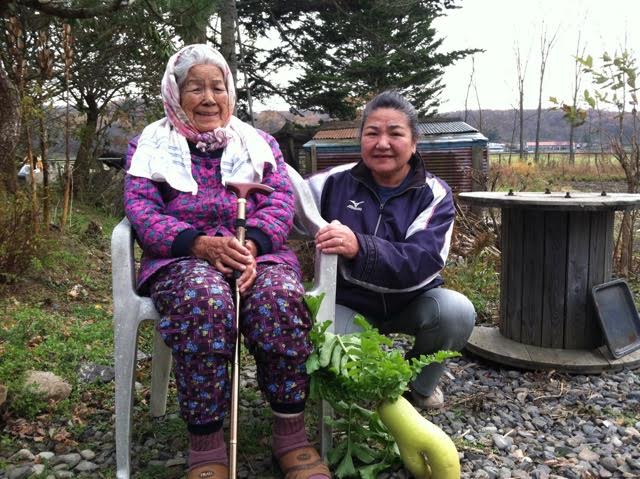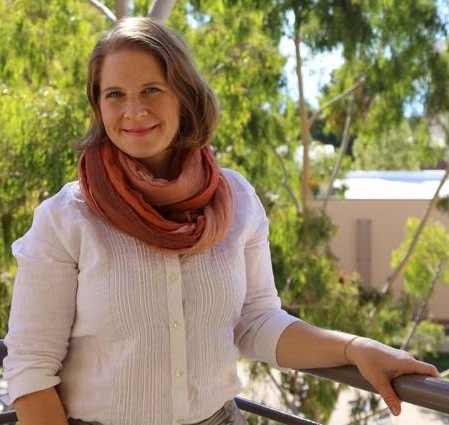
Weaving Past with Present

While traveling through Tokyo 16 years ago, ann-elise lewallen happened upon a mat-weaving workshop led by an Ainu woman from the northern Japanese island of Hokkaido, the native homeland of the indigenous Ainu people. lewallen was struck by the joy and relaxation the women experienced as they learned to twine fiber into a cord and then use that cord to weave a mat.
lewallen, an associate professor of Japanese cultural studies at UC Santa Barbara, realized this workshop served as a safe place for the women to celebrate and share their language and culture — out of the public eye — as they explored through textile making what it meant to be Ainu, or newly identify as Ainu, in 21st-century Japan.
In fact, lewallen’s interest in Ainu cultural revival and textile making — with the help of that workshop — became the topic for her new book, “The Fabric of Indigeneity: Ainu Identity, Gender and Settler Colonialism in Japan” (School for Advanced Research Press and University of New Mexico Press, 2016). The book is an interdisciplinary project focusing on Japanese studies and the emerging field of indigenous studies.
“My central message is for people to understand that there is a revival of indigenous communities that is not limited to the Americas, but is happening worldwide,” said lewallen, who is currently on sabbatical in Japan. “I really wanted the Ainu women’s story to be part of that conversation. People who might never have imagined indigenous communities in Japan, or Asia, will now be challenged to think about indigenous resilience from a different geographic and historical angle.”
In her book, lewallen explores how Ainu women participate in the material arts as a way to restore, revive, preserve and celebrate their heritage and Ainu identity, which had been suppressed through years of marginalization under Japanese colonial domination. She discusses how the fabric arts connect Ainu women not only to their cultural past, but also to contemporary life.
Indeed, she said, Ainu communities historically embraced a gendered division of labor, with women engaging in textile arts while men were entrusted with woodcarving, complementary labor still honored in the contemporary movement.
Through textiles, Ainu women create heritage objects such as marriage and ceremonial clothing featuring patterns and motifs both ancestral and modern. They use traditional and contemporary materials as fabric and employ techniques like embroidery, applique and weaving and basketry, lewallen said.
“Historically women used materials like plant fibers, elm bast-fiber and nettle (a very fine grass) to weave cloth and cattail for the mats and baskets. Also, they combined these with cotton and silk they acquired from trade,” she continued. “Today they use whatever heritage materials they can find or they purchase cloth from the fabric store. They enjoy experimenting with their ancestors’ techniques and incorporating techniques from various indigenous communities.”
lewallen’s research is in the context of Japanese colonization of the Ainu homeland of Hokkaido, which officially began in 1869 when the Japanese government unilaterally annexed Hokkaido to Japan. The colonization of the Ainu community actually began earlier, in 1799, according to lewallen, when Ainu women were taken as “local wives” and forced to marry Japanese men. Under Japanese control, the Ainu lost their land and their language, and indigenous customs were banned as the Japanese government put in place social, political and economic reforms in an attempt to modernize the country. The Ainu were forced to assimilate and received automatic Japanese citizenship, which denied their status as an indigenous group. Over the years, many Ainu women left Hokkaido to pursue job opportunities in Japanese cities and, under the pressure of ongoing colonialism, became alienated from their Ainu heritage.
Today, lewallen noted, the Ainu community includes at least 30,000 Ainu-identified people across Japan, with most living in Hokkaido, plus about 5,000 Ainu in Tokyo and tens of thousands more with some Ainu ancestry in other areas of Japan. In 2008, under pressure from the United Nations, Ainu activists and their supporters, Japan formally recognized the Ainu as an indigenous group.
“These communities have survived,” she explained. “It’s not just survival but a transformation of that culture to something that is a medium of expression, pride and exploration. The Ainu have crafted lives that speak against the rhetoric of Ainu as a ‘vanishing race’. The beautiful thing that’s happening now is that people are overcoming these legacies of racism.
“All the political work being done internationally would not have happened but for the fierce the determination of these Ainu grandmothers and their profound love for their ancestors. They have a lot of pride to carry on their culture.”



